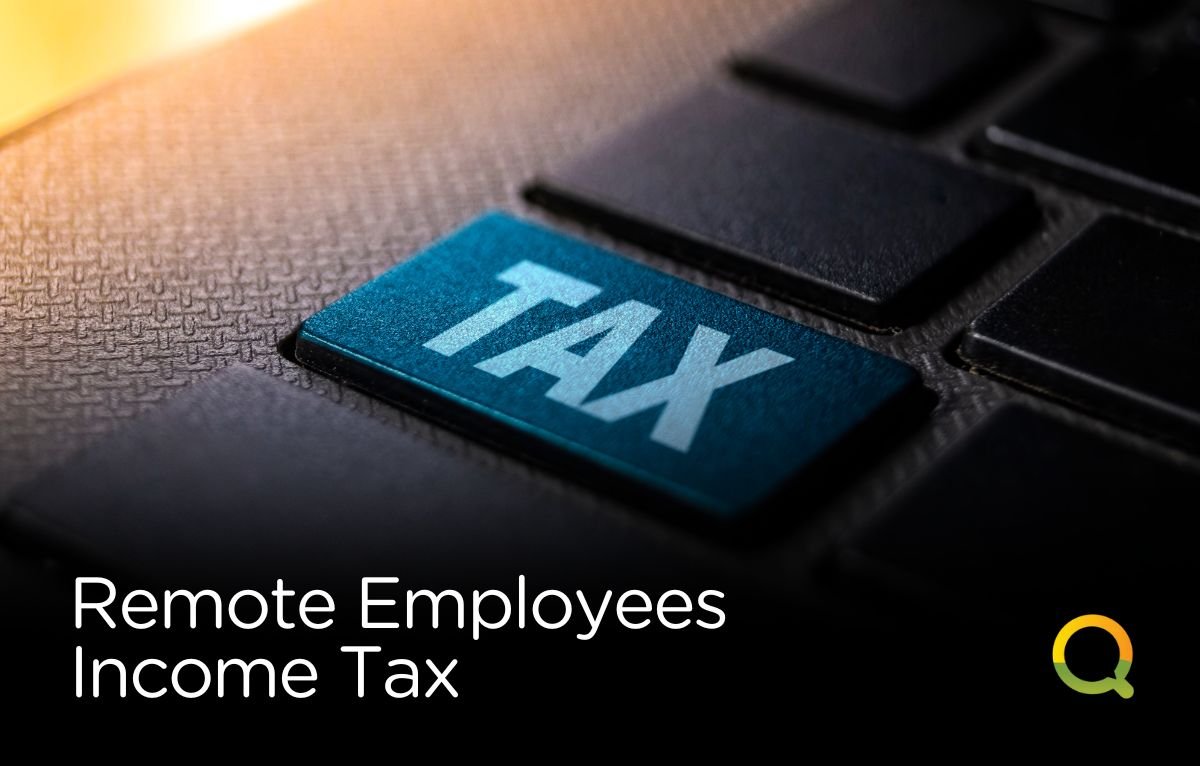
Employees working from home, in a different state or country than their employer, often don’t realize how much their location can impact what they owe and where they owe it.
Understanding how income tax works for remote employees is crucial not just for compliance, but also for avoiding last-minute surprises. In 2025, as global work arrangements grow more complex, so do the tax rules around them.
Even if work happens online, tax liability is very much grounded in geography. Governments still expect individuals to pay income taxes based on where they physically live and work. That applies to both state and national jurisdictions.
If you live in California but your employer is based in Texas, you’ll likely owe California income tax, even if Texas doesn’t have one. The reverse applies too—if you move from a high-tax state to a low-tax one, your liability might drop. These location-based rules are the foundation of remote tax compliance.
In 2025, more companies are moving toward distributed teams. That increases the risk of double taxation or compliance gaps for both workers and businesses. Being proactive is the only way to stay ahead.
Tax rules hinge heavily on where an employee is a resident. Residency determines which tax authority has the right to collect income taxes.
The rules for establishing residency vary by jurisdiction, but in most cases, spending more than 183 days in a location is enough to trigger tax obligations.
Some states in the U.S., like New York, even have a “convenience of employer” rule. This means if your employer is based there and you’re working remotely for convenience rather than necessity, you could still owe taxes in that state, even if you never step foot there.
That’s why anyone working remotely in 2025 should ask early: “Where am I legally considered a resident, and what taxes come with that?”
Remote work isn’t limited to domestic shifts. A growing number of professionals now live and work from entirely different countries than their employer.
This introduces a complex layer of tax rules. Most countries expect you to pay taxes on any income earned while physically present in their territory.
Double taxation agreements (DTAs) between countries exist to prevent workers from being taxed twice on the same income. However, these treaties vary widely and can be difficult to interpret without guidance.
Tax residency, time spent abroad, and the presence of a permanent establishment all come into play.
In some cases, remote employees may need to file taxes both in their home country and the country where their employer is based. This makes understanding how income tax works for remote employees absolutely essential for cross-border workers.
Employers aren’t off the hook either. When staff work from another state or country, businesses may trigger “nexus” status, creating new tax obligations like payroll taxes or corporate reporting in that jurisdiction. Ignoring this can lead to legal issues or penalties.
Many companies now require remote employees to register their location during onboarding. This lets HR and finance teams plan accordingly and handle any tax filings or withholdings that come with the territory.
Qupify’s outsourcing and automation services can help streamline these processes, ensuring employers stay compliant without wasting internal resources. From onboarding documentation to payroll adjustments, automation reduces the margin of error.
Despite the growing popularity of remote work, many employees are still unaware of how their location affects taxes. These are a few of the most common mistakes seen in 2025:
Remote workers often underestimate the complexity of tax reporting. Inconsistent residency status, multiple income streams, and differing employer locations can easily cause missed filings or underpayments. These small issues can lead to large fines.
Compliance isn’t about paperwork—it’s about clarity. Employees and employers alike need systems that document work locations, income sources, and any withholding obligations.
Here’s what you can do:
Digital solutions make this easier. Qupify integrates remote employee data, task management, and CRM tools that support accurate documentation. When paired with tax planning software, the entire workflow becomes smoother and more reliable.
Taxes rarely come up during the excitement of accepting a remote role. But ignoring them can lead to compliance issues, unexpected bills, and complicated paperwork.
The smartest approach is to plan ahead, communicate clearly, and use tools that keep everything transparent.
If you’re an employee, ask early how your location might affect your tax obligations. If you’re an employer, don’t assume your team is safe from multi-state or international tax exposure.
Get proactive, use the right technology, and work with advisors familiar with global employment law.
Understanding how income tax works for remote employees is no longer optional. As distributed teams and cross-border work arrangements become standard, everyone involved—employees, employers, and contractors—must be clear on what rules apply.
It’s not about finding loopholes. It’s about building a system that works.
Qupify helps businesses streamline remote work operations, from smart automation to compliance-friendly onboarding. Let us help you simplify your remote strategy.